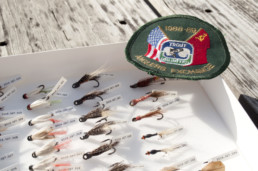Excerpted from the New York Times article “Fishing in Soviet Union” printed in 1990 before the fall of the Soviet Union.
In 1986, Steve Lundy, then the president of Trout Unlimited, and others journeyed to Moscow to meet with officials of the agency that manages wildlife resources in Russia, the largest of the 15 republics that make up the Soviet Union. From that meeting emerged an angler exchange program between the countries as well as an agreement to share scientific information on the management of trout and salmon fisheries.
In July 1987 Gardner Grant of White Plains led a contingent of Trout Unlimited fly fishermen to Russia in quest of Atlantic salmon in the Kolvitsa River, which enters the Barents Sea on the north side of the Kola Peninsula. That trip, if measured by angling success, was a bust. Grant caught the only salmon – and they were small – on the last morning of fishing.
In the fall of 1989, Earl Worsham of Atlanta led another such contingent to the Kola River near Murmansk. One salmon, a 21-pounder, was caught by Tom Pero, the editor of Trout Unlimited’s magazine, TROUT. In both instances, the timing was such that major runs of salmon were not taking place. Also, the Kolvitsa has no large salmon. Something similar occurred when a group of Russian anglers visited the Catskills and Yellowstone National Park in late fall 1988. Cold weather put a damper on the trout fishing in both locations.

Naturally, when the Russian fishermen visited the United States, their first stop was at the Wulff school in Livingston Manor, NY where they presented the box of flies to Earl Worsham:
This is a box presented to me as Chairman of the First Anglers Exchange held at Joan & Lee Wulff’s home/school in Livingston Manor, NY by the delegation from Murmansk, Russia (then the Soviet Union).
Very early flies by a Russian fly tyer. I don’t have his name and do not think he was part of the delegation the Exchange proceeded on to Yellowstone National Park and then on to Chicago where a banquet was held. – Earl Worsham

